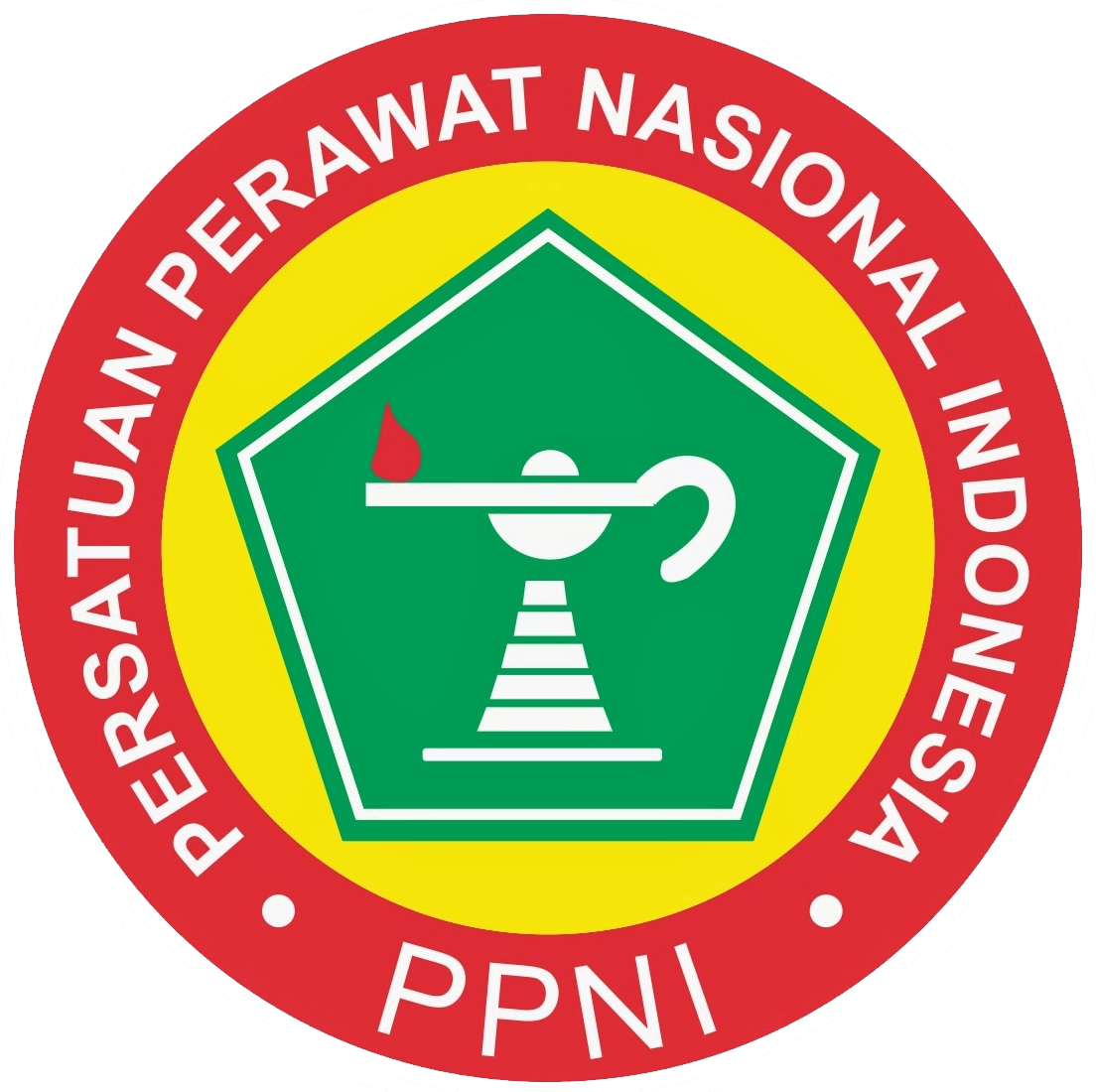OVERVIEW OF NURSES IN THE PREVENTION AND CONTROL OF HEALTHCARE ASSOCIATED INFECTIONS (HAIS) AT KARDINAH
Abstract
Background Nurses are most often in contact with patients, so that of all health workers, nurses are the most at risk of being exposed to various diseases. Objective: To identify the description of nurses in the prevention and control of health care associated infections (HAIs) in the emergency department of Kardinah Hospital, Tegal City. Methods: This research is a quantitative research using descriptive research methods. The sampling technique in this study used a total sampling of 40 Results: Data analysis showed that 90% of the emergency room and ICU nurses had high knowledge of the use of PPE, as many as 10% of nurses had a negative attitude in the use of PPE. The most reason for using PPE is to maintain personal safety and the most reason for not using PPE is because they are not used to it Conclusions and Suggestions: PPI provides socialization and information on the use of PPE according to hospital SOPs. IPCN is expected to be the right role model in the use of PPE, hospital management provides support and motivation to nurses to be more disciplined in the use of PPE to prevent HAIs.
Full Text:
PDFReferences
Kementerian Kesehatan RI. Pedoman Pencegahan dan Pengendalian Infeksi di . Rumah Sakit dan fasilitas lainnya. Jakarta. 2011.
World Health Organization. Word Alliance for Patient Safety. Global patient safety challenge 2005-2006: Clean Care is safer care. World Health Organization, Geneva. 2005.
Darmadi. Infeksi Nosokomial: Problematika dan Pengendaliannya. Jakarta: Salemba Medika, 2008.
CDC. Fundamental Principles of Infection Prevention. 2011, (Online), (http://www.cdc.gov/HAI/settings
/outpatient/basic- infectioncontrolprevention- plan2011/fundamental-of- infectionprevention.html, diakses
Mei 2016)
Kepmenkes No 129 Tahun 2008.Standar Pelayanan Mininal Rumah Sakit. Jakarta : Kementrian Kesehatan.
WHO 2010. Using WHO Hand Hygiene Improvement Tools to Support The Implementation of National Sub- national Hand Hygiene Campaigns Patient Safety Save Lives Clean Your Hand.
Anderson K, Richmond AM, Russel BS, RN Kit Reed. Infection Control Risk Assessment. Annual Educational Conference & International Meeting. APIS Baltimore, 2011.
Lardo Soroy, Prasetyo Bebet, & Purwaamidjaja Dis Bima. Infection Control Risk Assessment (ICRA). CDK-238, Vol. 43 (No. 3), 215-219,
CDC. Guideline for Isolation Precautions: Preventing Transmission of Infectious Agents in Healthcare Setting, 2007, (Online), (http://cdc.gov/hicpac/pdf/isolati
on/ isolation2007.pdf , diakses 25
Mei 2016)
Direktorat Jendral Pemberantasan Penyakit Menluar dan Penyehatan Lingkungan. Pedoman Pelaksanaan Kewaspadaan Universal di
Pelayanan Kesehatan. Departemen
Kesehatan RI, Jakarta. 2010.
Kementerian Kesehatan RI. Pedoman Manajerial Pencegahan dan Pengendalian Infeksi di Rumah Sakit dan fasilitas lainnya. Jakarta.
Ernawati Elies, Asih Tri R, & Wiyanto Satra.
Penerapan Hand Hygiene Perawat di Ruang Rawat Inap Rumah Sakit. Jurnal Kedokteran Brawijaya, Vol.
(No. 1), 89-94, 2014.
DOI: https://doi.org/10.31983/juk.v1i1.8032
Article Metrics
Refbacks
- There are currently no refbacks.
Juru Rawat. Jurnal Update Keperawatan is licensed under a Creative Commons Attribution-NonCommercial-ShareAlike 4.0 International License.
JURU RAWAT. JURNAL UPDATE KEPERAWATAN
e-ISSN 2809-5197
Published by : Program Studi D3 Keperawatan Tegal Poltekkes Kemenkes Semarang
Jalan Dewi Sartika No.1 Kelurahan Debong Kulon, Kecamatan Tegal Selatan, Kota Tegal, Jawa Tengah
Email: jururawattegal@gmail.com
Lokasi:






